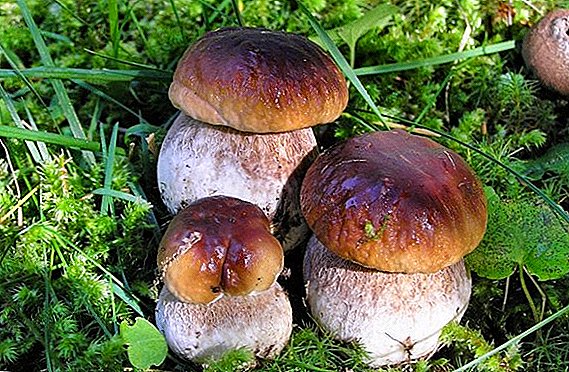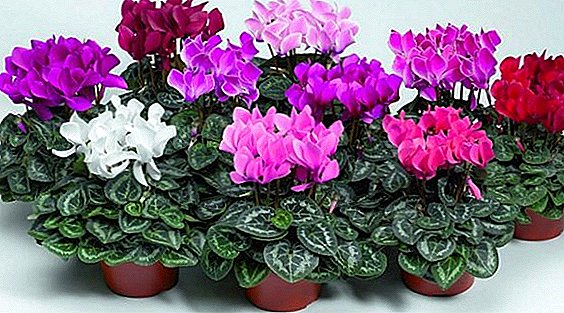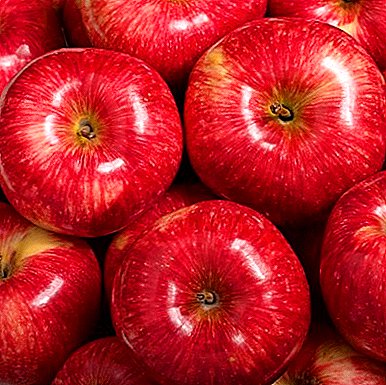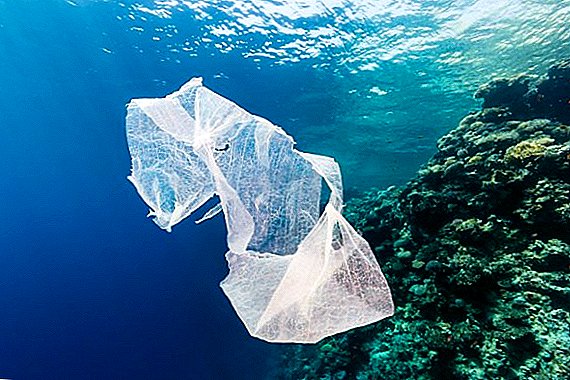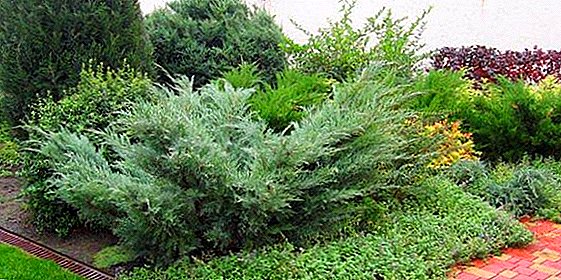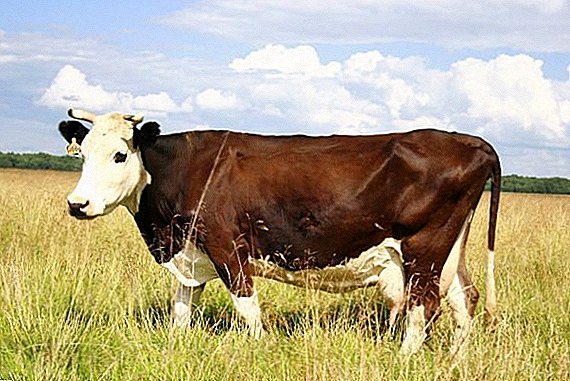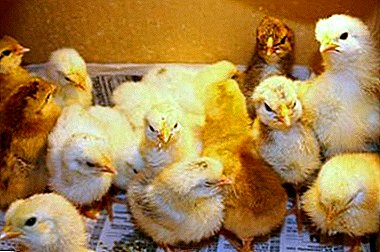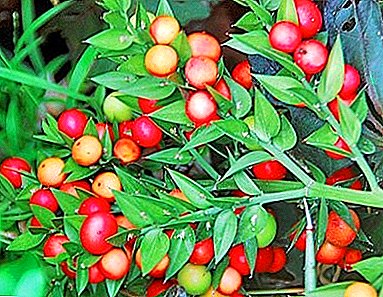
Iglitsa (Ruscus) - a perennial evergreen plant from the Asparagus or Liliaceae family.
There are 7 species, the largest number of which grows in the UK, the Mediterranean, the Caucasus and the Crimea.
Among them 3 types are relic and are protected.
At home, Ruscus does not cause much trouble. In the summer months, pots of plants can be put on the balcony or in the garden.
Description of the home plant
The leaves and branches of the iglitsa have a very interesting structure. The leaves are reduced and almost imperceptible, since they are scale-like films. Photosynthesis function perform phylloclades are prickly leathery shoots, resembling leaves in appearance. They grow up to 2 cm in length.
Inflorescences appear on phylloclades, consisting of small florets. In their place ripen round berries. Usually they have a bright red or orange color. During long period On the plant are both flowers and fruits.
Iglitsa refers to dioecious plants. On the shrub there are unisexual and bisexual flowers that are pollinated during rain or dew. Flowing drops carry pollen from male flowers to female ones.
The fruits of Ruscus are edible as well as the young shoots. Seeds are used in the preparation of coffee substitute. Also, all parts of the plant are used in traditional medicine. Some species are used as pet food. In England, brooms were made from Ruscus.
Recently, the number of plants growing in the wild has been greatly reduced.
In the red book were listed 3 species: Colchis (R. Colchicus), Sublingual (R. Hypoglossum) and Hyrcanus (R. Hyrcanus).Because of this, iglitsa was used in gardening of garden plots, and also grown as a potted plant at home.
Views and Photos
There are several types that are most popular.
Colchis
The plant reaches a height of 45-55 cm. It has erect stems with large elongated phylloclades, slightly pointed. The lower ones are located opposite, and the upper ones are alternately.
Inflorescences appear on the lower side of the phylloclades. Berries ripen fairly large, about 10 mm in diameter, bright red. Inside are two seeds. Inflorescences bloom during the autumn and winter months. By the end of spring the fruits of the Colchis iglyts ripen.
Coniferous and deciduous forests grow in the wild, also along gorges. Prefers clay or loamy, well-moistened soil. Propagated by seed or rhizome division. Colchis Iglitsa is listed in the Red Book. Below the photo shows the “Kolkids iglitz”:




Pontic (prickly, prickly)
The species of this species grows from about 60 cm to 1 m. It has erect stems with leathery, lanceolate, slightly elongated phylloclades. Small flowers bloom from February to April. Fruits, in diameter of 8-10 mm, ripen in December.
Natural habitat - juniper and pine forests, rocks. To the condition of the soil is not particularly demanding. The prickly iglitsa propagates in a vegetative way, as well as with seeds.
This species is widely used in traditional medicine. Tinctures and decoctions treat venous insufficiency, varicose veins, atherosclerosis, arthritis, bronchial asthma. Pontus (prickly, prickly) iglitz is shown in the photo below:



Sublingual
The perennial Ruskus bush grows up to 40 cm. It has an upright stalk with leathery lanceolate phylloclades. In length, they reach 5-7 cm. In May, 3-5 flowers bloom on each phylloclade. Fruits form in their place, by December they become bright red.
It grows in countries of Central Europe, the Mediterranean and Asia Minor. Prefers the raw soil of forests or rocks.
Iglitsa will not bring a lot of trouble in the care, but still it is important to adhere to some rules. In the photo below you can see how the "Hyplycea" looks:




Home care
Care after purchase
 After the acquisition of Ruscus in a pot and delivery home, he is provided with good care.
After the acquisition of Ruscus in a pot and delivery home, he is provided with good care.
First of all, you need to choose the right place for permanent growth. If the purchase of shrubs fell in the summer months, it is better to take the pot to the balcony or garden.
The place must be protected from sunlight.
Due attention should be paid to soil moisture. If necessary, after 10-14 days can be transplanted into a new pot.
Pruning
Pruning is necessary as needed.
The potty needle is quite compact and neat. Mandatory removal should be dried shoots.
Twigs are used when decorating bouquets.
IMPORTANT!Pruning twigs can not be carried away. In a year you can cut no more than 30% of the total green mass of the plant.
Cropped healthy twigs are used for vegetative propagation.
Watering
 In the summer months, a period of intensive growth, watering is carried out at least 3 times a week.
In the summer months, a period of intensive growth, watering is carried out at least 3 times a week.
In winter it is worth cutting down to 1-2 times.
Pot soil should be moderately moist.
The green part of the shrub is periodically sprayed with separated water.
This will not only wash away the dust, but will also contribute to pollination.
Also spraying is the prevention of the appearance of pests.
Landing
For planting, you can use the already prepared earthen mixture for lemons. When self-cooking in a ratio of 2: 1: 1: 1 mixes up:
- sod land
- peat,
- humus,
- sand.
In the tank for planting should be drainage holes. Since the shrub does not love water stagnation, the bottom is additionally covered with a good layer of expanded clay or crushed red brick.
Transfer
 Ruscus does not need an annual transplant, only if necessary.
Ruscus does not need an annual transplant, only if necessary.
To give a special form are used various landing containers. for example
A transplant removes all dried twigs. A transplant procedure, if the need arose, should be done in the spring months.
Growing from seed at home
This method of reproduction is one of the most difficult. Seeds for planting must be fresh. Before planting the seeds are soaked and placed on 5-7 days in the refrigerator. In the seedling box with a layer of 5-8 cm poured earthen substrate. On the ground surface stacked seeds and sprinkled with sand, a layer of which is no more than 1 cm. Put glass on the box or cover with film and ensure a temperature of 19-21 degrees.
Periodically spraying and airing of planted seeds. Seeds germinate very slowly. Sometimes it takes up to 10-12 months. After the sprouts grow by 6-8 cm, they need to dive into separate pots.
Breeding
 The most effective way of breeding - rhizome division.
The most effective way of breeding - rhizome division.
This procedure is carried out in the spring. Used adults, overgrown shrubs.
When splitting the rhizome, you need to know that from each separated part must depart green shoots.
Temperature
Ruscus is good develops at room temperature. In the summer months it is advisable to bring the plant to fresh air, for example, in the garden or on the loggia. It also tolerates a decrease in temperature to 13 degrees. There are frost-resistant species that are suitable for gardening gardens, as well as loggias and balconies.
Lighting
Iglitsa loves diffused light also grows well in the shade. It is impossible to leave the shrub under the direct rays of the sun, young phylloclades can suffer from them. The most successful placement on the windows facing east or west.
Benefit and harm
All parts of iglitsa used in medicine, including folk. Preparing tinctures and decoctions with anti-inflammatory properties. Used to treat arthritis, arthrosis, metabolic recovery. Also, tincture of iglitsy used to strengthen the walls of blood vessels, preventing the formation of blood clots.
ATTENTION! With caution, drugs on the basis of butt should be used for pregnant women and people suffering from high blood pressure.Before use, be sure to consult a doctor.
Diseases and pests
Ruscus - hardy shrub and rarely exposed to diseases. Often the cause of plant disease becomes improper care. Waterlogging soil can lead to decay of the roots of the butcher, and insufficient moisture - to dry out.
Among the greatest pests danger for the plants they represent the scythes and the spider mite. To get rid of them, the whole plant is treated with a solution of insecticides. When processing shrubs worth adhere to the instructions and safety rules.
Iglitsa - very beautiful plant and quite rare. Some species are listed in the Red Book. Therefore, the owners of this plant will not only enjoy the beauty, but also prevent their complete disappearance.


